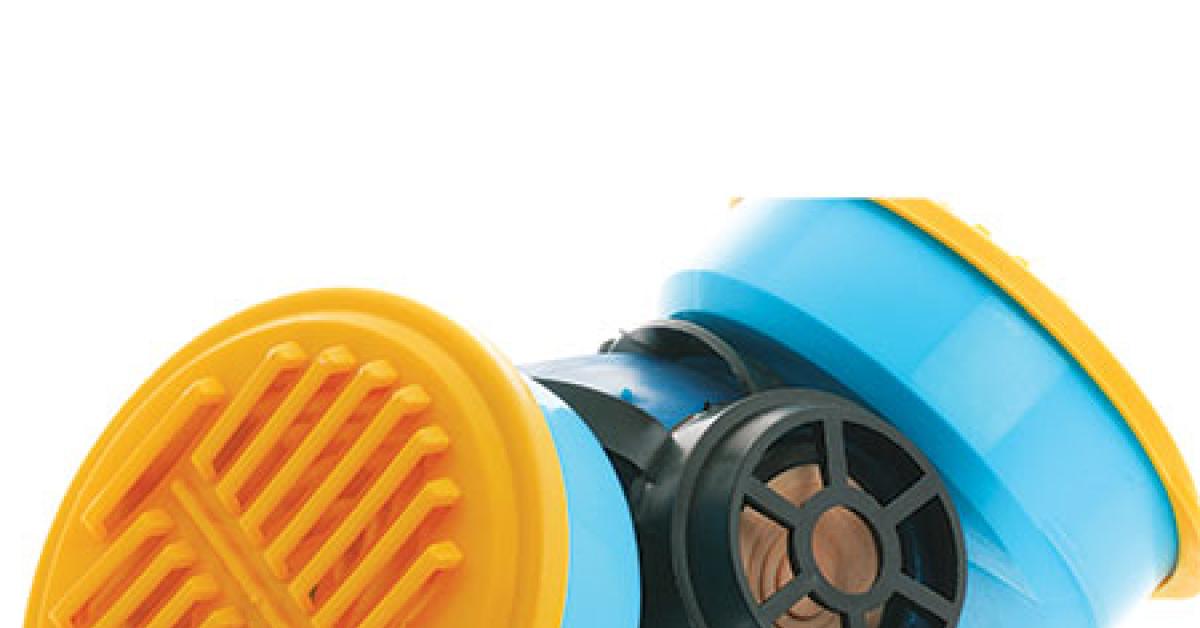CHICAGO — High injury rates are the most expensive manageable events affecting laundry operating profitability, according to Bob Corfield, president of Laundry Design Group LLC in Las Vegas.
“Laundries with high DIR (disabling injury rates) often pay the highest insurance costs, eroding profits,” he says. “While training and worker activity are key drivers in managing a safe work practice, the diligent use of proper personal protective equipment (PPE) is essential.”
The U.S. Department of Labor’s Occupational Health and Safety Administration (OSHA) defines PPE as “equipment worn to minimize exposure to hazards that cause serious workplace injuries and illnesses.”
“It’s extremely important for employees to use PPEs,” says Laura Gracia, safety director for Admiral by Alsco in Houston. “It helps in the prevention of life-altering events. Even death.”
“Interestingly, the laundry and uniform industry are in the business of PPE, supplying reusable gloves, uniforms, gowns, aprons, wipers and cleaning cloths designed to protect workers using their products,” adds Corfield.
ESSENTIAL PPE
Essential PPE, regardless of the laundry type, starts with the basics, says Corfield. That includes the right footwear, the correct body and skin protection, and head protection, which includes hardhats (if the area calls for it), and ear and eye protection.
The types of PPE vary in accordance to the type of laundry being processed, says Russell Holt, chief compliance officer for Superior Linen Service in Springdale, Ark. This includes industrial uniform, healthcare, and food and beverage.
“Generally speaking, laundry employees wear PPEs in soil sort, washroom, when welding, handling chemical, handling soiled linens on the route, grinding, performing any live electrical work, including LOTO (lockout/tagout) testing to ensure electrical has been disengaged, and fall protection,” he says.
Corfield says that PPE for healthcare laundry workers is part of every certification related to healthcare and is required under OSHA safety requirements for BBP (bloodborne pathogens) exposure control measures. These include closed-toe, slip-resistant shoes; blue nitrile puncture-resistant gloves; fluid-resistant gowns that cover arms and torso; and face/eye and breathing protection. He says that all should be used as required by local bylaw.
PPE required for a task or work area in any laundry should be “designed” for that area, and then workers need to be trained in the proper use of the equipment, according to Corfield.
He offers this example: Any person involved in the refilling or transfer of laundry chemicals should have splash-proof, resistant boots; an apron or smock; gloves covering the arms; and full faceguard and breathing protection on while working with open containers or transfers.
“Wet areas should address worker exposure to hot water, steam or chemicals,” Corfield says. “Head protection should come into play with overhead slings/rail and low pipes or steel. Hand protection should protect from repetitive work activities and exposure to sharps. Heat gloves should be used in areas dealing with hot textiles exiting ironers to protect workers’ hands.”
SOME PPE TO CONSIDER
A full list of PPE that a laundry might use can’t be covered in one article. In fact, each laundry has to evaluate the plant and the jobs to determine what equipment is required.
Holt points out that laundries have to do this in order to be compliant with OSHA standard 1910.132(d)(1): The employer shall assess the workplace to determine if hazards are present, or are likely to be present, which necessitate the use of personal protective equipment (PPE).
Gracia offers up the following list as a starting point for a laundry to think about concerning PPE:
- Hard hats: For use in washroom aisles and soil-room areas where there is overhead railing for soil bags, soil slings and wet slings. Also, for lifts.
- Back belts: In the washroom and soil room for heavy lifting, pushing and pulling.
- Steel-toe, high-top safety shoes (slip-resistant, oil-resistant): For wet washrooms, if applicable; service personnel on routes; and anyone whose job includes using pallet jacks, forklifts, and in the handling of rolling stock such as baskets, wire cages, racks, etc.
- Steel-toe, high-top safety shoes (slip-resistant, oil-resistant, electrical hazard protection): These special shoes are for engineers and maintenance personnel and should be worn always.
- Safety glasses: Areas of use can include the washroom, to protect eyes from chemical splashes; soil room, to protect from flying debris when sorting soil; and in the healthcare soil room, to protect eyes from debris and free fluids while sorting medical soil.
- Plastic apron: To be used when handling chemicals.
- Rubber boots (steel toe): These should be used for chemical handling and walking/working in areas of wet surfaces and washrooms.
- Rubber/neoprene gloves: For chemical handling.
- Fluid-resistant lab coats, aprons: To protect from free fluids while sorting medical soil.
- Latex/neoprene lightweight gloves: For sorting of medical soil.
Other PPE that Holt suggests includes protection for welders (a welder’s apron, gloves, sleeves, goggles, face shield), a respirator for chemical handlers, and a harness and lanyard or lifeline for fall protection.
COMPLIANCE
To help ensure that employees are utilizing PPE, using the right equipment and using it correctly, Gracia recommends job safety assessments.
“Job safety assessments help employers identify exposure to hazards and can then provide proper PPEs needed and training on using those PPEs—and their limitations,” she says.
Once the PPE is selected and usage policies are in place, a laundry needs to enforce its policy, says Gracia.
“To help with enforcement, do the research and keep the wearers’ comfort in mind,” she adds. “You may consider using employee feedback when selecting PPEs.”
Holt says his company tracks safe and at-risk behaviors by way of its behavior-based safety program. However, the company does not have a specific percentage as to how often wearing required PPE is ignored.
“It does happen, and when it does, in most cases we coach the employee on safe behavior and monitor to ensure employee behavior changes,” he says.
If a laundry supervisor sees an employee not wearing the necessary PPE, Gracia offers a few simple steps: Retrain, coach and counsel, and possibly discipline.
“If an employee does not or will not wear the assigned PPE, we should ask why,” she says. “There may be legitimate reasons for it. Maybe we missed something in our evaluation of the hazards.”
“PPE is not just something used to protect a worker in his/her environment; it needs to be maintained as a program, complete with area to put on and take off, dispose (of) items properly discarded, etc.” says Corfield. “If a PPE requires cleaning, it needs to be scheduled and monitored.”
Have a question or comment? E-mail our editor Matt Poe at [email protected].





